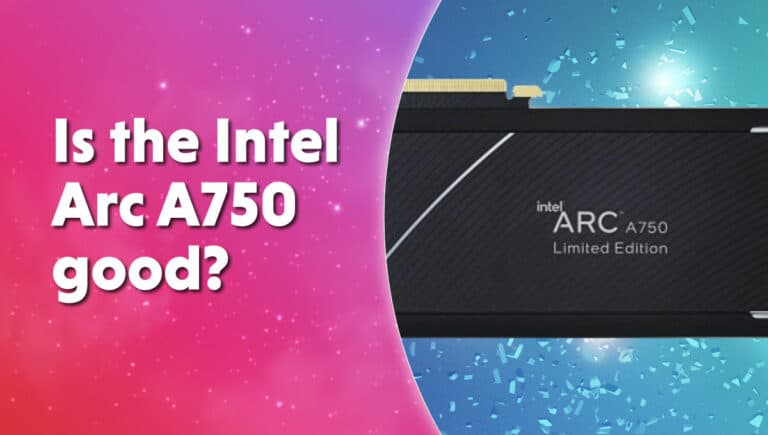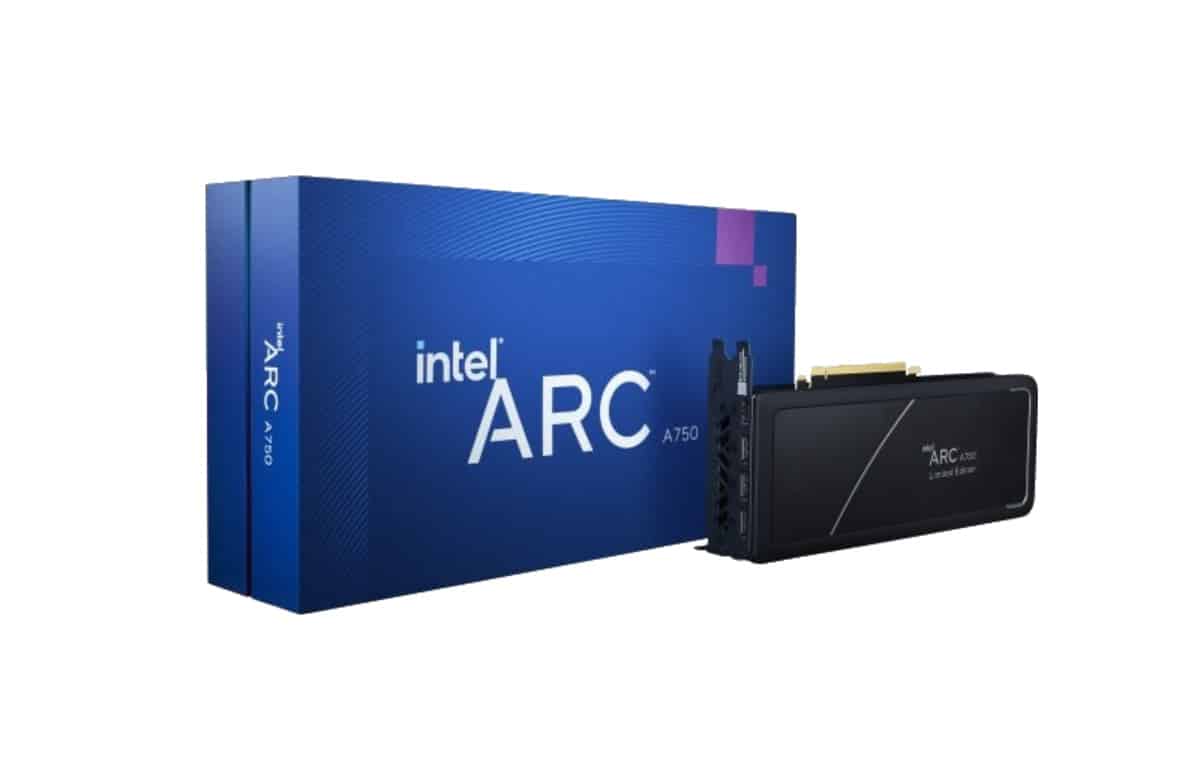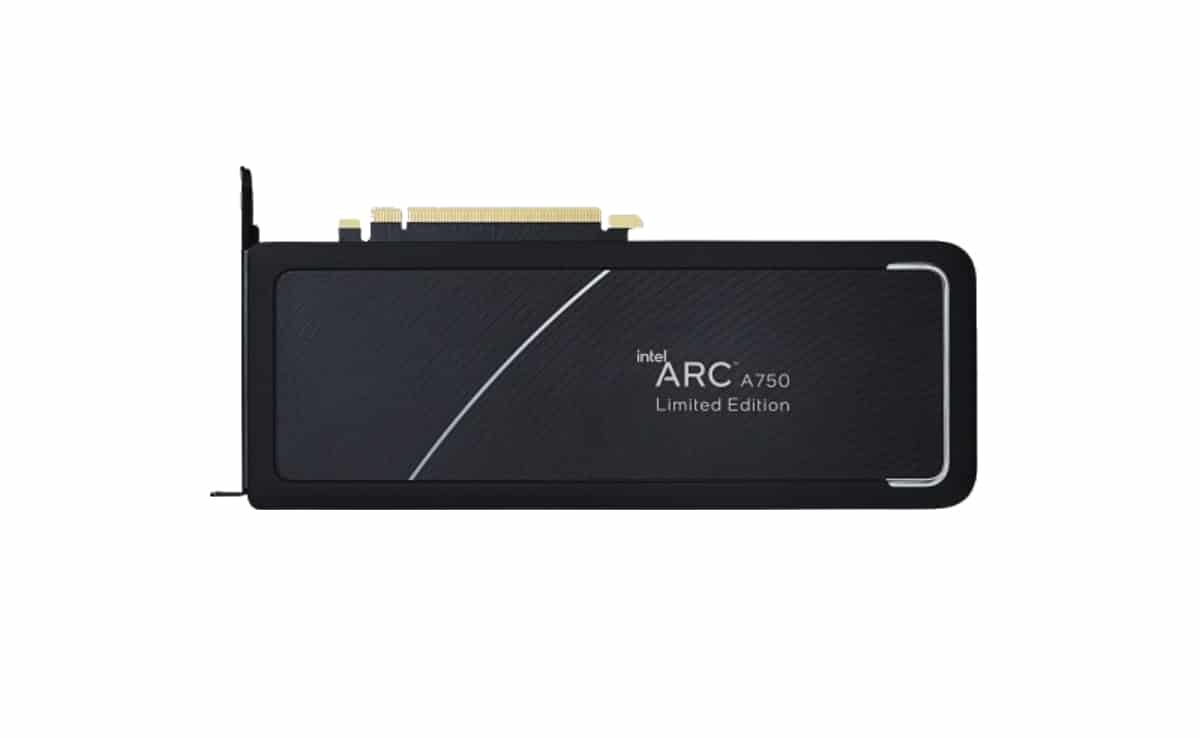
A third competitor in the GPU market but can it bring the fight to the top?
Updated: Oct 14, 2022 11:30 am

After the launch of Intel’s top graphics card to date, it is time to examine its less expensive model. The Intel Arc A750 does not pretend to have the fastest frame rates in its class but does not demand a premium price. The 1080p experience provided by the A750 is excellent.
The Arc A750 sometimes struggles to maintain 60 frames per second at 1440p, especially when ray tracing is turned on. These cards are equally as aesthetically pleasing as Nvidia’s Founders Edition cards, and they look fantastic in cases with side panels.
Check out our where to buy the Intel Arc cards page for the latest availability!
The Intel Arc A750 is a very competitive card as per its price according to the results at 1080p resolution. It comes at $289 and offers an 8GB VRAM. At 1440p, the Arc A750 performs well with the enabled ray tracing feature.

Would you be satisfied with an Arc A750 according to the price? Yes, for sure. The performance is usually good at 1080p and at 1440p. For older systems without Resize BAR support, there will be instances where it’s way off the mark, but generally speaking, if you bought a cheap prebuilt PC and it had an Arc A750 in it, it will work fine. And that’s actually reasonably good praise for a GPU of the first generation.
Intel’s engineers will continue optimizing Arc’s performance, especially if the company places most of its GPUs in prebuilt systems, which would give Intel greater overall system control. Still, you should never purchase hardware based on future promises. Arc’s first performance is a mix of exhilarating highs and some drawbacks, highlighted by drivers that are still under development.
The Arc A750 offers strong hope for a more competitive future—something the graphics card market sorely needs after two years of shortages and after GPUs costing $1,600. Most gamers will be better off choosing the more polished experience Nvidia and AMD offer.
Is the Intel Arc A750 worth it?
The alchemy architecture-based Intel Arc A750 8 GB is one of this generation’s most potent graphics cards. It includes a contemporary appearance and exceptionally high-quality interior parts. The Arc A750 can run on the level of AMD Radeon RX 6600, RX 5700 XT, and GeForce RTX 2070 at 1080p resolution.
Performance is only 6% slower than Intel’s own Arc A770 flagship, which is hardly much. As a result, the A750 is at the lower end of the midrange GPU market segment.
When the gaming resolution is raised to 1440p, the Arc A750 outperforms its rivals. Now, it beats the RX 6600 by 13%, the RTX 3060 by 4%, and the RX 6600 XT by almost as much. The Intel Arc A750 is not fast enough for 4K.
The Arc A750 is an excellent card for 1080p Full HD gaming at the ultra settings, and if you’re prepared to scale back settings a little, 1440p at 60 FPS is also achievable in most games.

Buyers of Intel’s new Arc graphics card family are urged to double-check that their computer is compatible with two relatively new technologies, Resizable BAR (“ReBAR”) and Smart Access Memory.
Additionally, good benchmarks and anecdotes indicate that the Arc A750 is inconsistent in performance. The results significantly rely on the settings and games. Even though the XeSS feature present in the A750 boosts the performance, it won’t be very useful if it can’t match DLSS’s visual quality.
When AMD and Nvidia don’t have many new and exciting products to debut, at least at this price and performance, the Arc A750 is a decent GPU that looks ready to offer real competition for the midrange of the graphics market.
Many new models of GPUs will arrive in the near future. But the Arc A750 has shown some mixed results. With plenty of DX11 and older titles underperforming. Over time the results may improve. But now, the NVIDIA GPUs have better performance overall.





